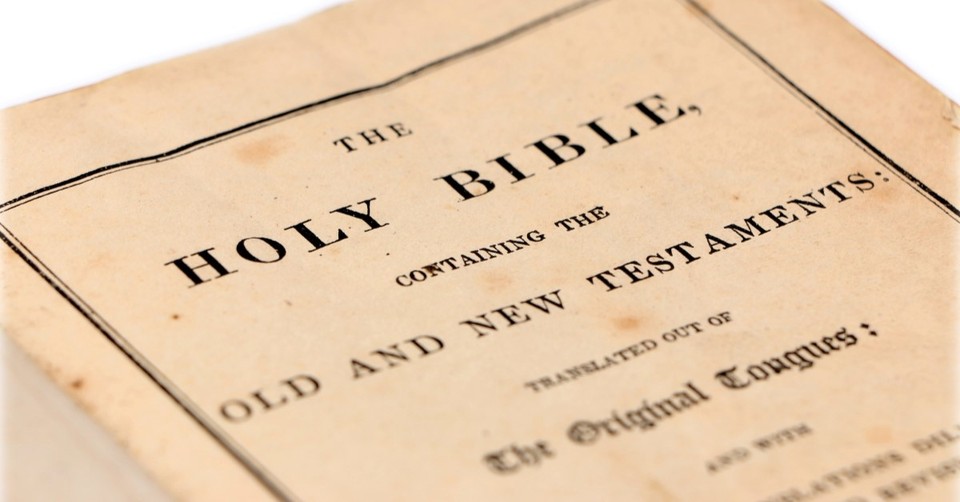When Was the King James Bible Written?

With so many English translations of the Bible—from the American Standard Version to the Young Living Translation—we may wonder why there is any value to knowing the story of the King James Bible. Isn’t it just another version, one with an older language?
If we think so, we miss why it was such a monumental project to translate the original Hebrew and Greek into English for common people as well as clergy. We also cheat ourselves of the rich history of the people who strived to achieve this historic goal.
What English Translations Came Before the King James Bible?
To understand where this English translation for everyday people came from, we must start by looking at the earliest translations, the journey that finally led to the King James Bible.
The Septuagint. Ryan Reeves explains in a Gospel Coalition article that the Septuagint is a collection of Greek translations of the Old Testament. The Septuagint is the oldest-known translation of the Old Testament and soon built a sterling reputation. Reeves observes that it “was considered by Philo and Josephus to be on an equal footing with the Hebrew Bible. It was preferred to the Hebrew by the Early Christian Church.” Scholars believe the Septuagint translation was started by Egyptian king Ptolemy Philadelphus (a Greek sovereign who ruled Egypt from 285-246 BCE). He commissioned a translation of the Hebrew Bible into Greek for his library in Alexandria. He called six translators from each of the 12 tribes of Israel to translate the Jewish Torah into Greek–a total of 72 translators.
The Latin Vulgate. The Vulgate translated the Old and New Testament from Hebrew and Greek into Latin in 382 A.D. Pope Damascus I commissioned the project, giving the translation task to a priest and historian named Jerome. Its use spread within the Catholic Church and was officially affirmed as the Latin Bible at the Council of Trent (1545-1563). There are still English-speaking Catholic churches that maintain a full Latin mass.
The John Wycliffe Translation. John Wycliffe translated the Vulgate into Middle English in the fourteenth century. Diane Severance explains in her article “John Wycliffe’s Life and Work” that as an “early critic of the Roman Catholic church and an advocate for translating the Bible into English, John Wycliffe paved the way for later reformers like Martin Luther and William Tyndale.” Like many who followed his example, Wycliffe opposed the papacy. He is quoted as saying, “England belongs to no pope. The pope is but a man, subject to sin, but Christ is the Lord of Lords and this kingdom is to be held directly and solely Christ alone.”
Wycliffe knew one way to give power to the people and break papal control would be to translate Scripture so that everyday people could read it. He began to distribute his version in 1382. He died two years later, but in 1428 he was labeled a heretic by Pope Martin V, who ordered his body exhumed, burned, and scattered.
The Luther Bible. Protestant Reformer Martin Luther kickstarted the Reformation in 1517 when he posted his 95 theses on a church door in Wittenburg. Among other complaints, he criticized Catholic leaders for controlling how people understood Christian beliefs by limiting their access to Scripture—keeping it in Latin so only priests could read it. After the Reformation started, Luther committed to solving this problem himself.
Luther spent 17 years translating the Bible from Hebrew and Greek into German—sometimes translating while imprisoned. Various translators helped him during that period, including Caspar Cruciger and Mattaüs Aurogallus. Rather than make a Latin-to-English translation using the Vulgate, he used a Greek translation by a scholar named Erasmus. The Luther Bible was completed in 1534. Never accepted by the Catholic Church, it became widely used in Protestant circles.
The Tyndale Bible. William Tyndale translated the Bible from Hebrew and Greek texts into English. Like other translators, the story of what made his work controversial only makes sense if we understand the power struggles involved. Tyndale lived in England when King Henry VIII ruled (1509-1547). Henry began his rule as a Catholic and argued against the Protestant Reformation as a heresy, making Luther’s Bible a heretical text. Tyndale wanted to provide a translation, but Henry thought Tyndale followed Luther’s teachings too closely. Tyndale wrote his version anyway, which the Bishop of the Catholic Church banned in 1526. Tyndale was executed for his actions in 1536.
However, unlike the Luther or Wycliffe situations, the ruler who opposed the translator changed his mind this time. As Reeves explains in an article about Henry VIII, “By the 1530s, the same Henry who had raged against Luther now had his own issues with the pope… In 1534, Henry had himself declared head of church and state…. [which] overturned the medieval laws against translating the Bible that had been in place since Wycliffe.”
Henry commissioned an English Bible for the new Church of England, and several translations followed in the 1530s. Myles Coverdale released the first complete Bible in English, the Coverdale Bible, in 1535. The final translation that Henry authorized, the Great Bible, appeared in 1539 and was considered the first authorized English translation for church and common use. Much of its material came from Tyndale’s translation.
The King James Bible. King James of Scotland became King James 1 of England and Ireland after the death of Henry VIII’s daughter Elizabeth in 1604. “James wanted unity and stability in the church and state but was well aware that the diversity of his constituents had to be considered,” Ken Curtis explains in his article “The Story Behind the King James Bible: How Was It Created.” Many Catholics and Protestants thought there were too many errors in other translations written since Henry VII’s authorized translation.
King James agreed to the proposal to create a new translation. He appointed 50 of the nation’s finest language scholars and approved rules for carefully checking the results. He also wanted the final product accessible to common people, using language that all could understand.
What Made the King James Bible So Groundbreaking?
Every translation since the Septuagint relied on one main person who had to learn Hebrew and Greek and painstakingly translate into another language. From Jerome to Wycliffe to Luther to Tyndale to Coverdale, all the translations relied on one or a few to do such awesome work. Not only did King James employ the best scholars. He also added a system to check for accuracy. Today, the King James version still holds its reputation as one of the most reliable early translations.
Who Was the King James Who Commissioned the King James Bible?
James was the only child of his mother, Mary Queen of Scots, and her second husband—Henry Stuart, Lord Darnley. James was born in 1566 and crowned James IV of Scotland as he turned a year old (his mother was removed from power that year because of complications involving Henry Stuart’s death and her third marriage).
Many years later, his cousin Elizabeth, Henry VIII’s daughter and Queen of England, died, making James next in line to the English throne. He was moved to England and named James VI of England and Ireland.
The efforts to translate the King James Bible began shortly after he was named King of England in 1604 and were completed in 1611.
What Separates the New King James Version from the King James Bible?
The New King James Version is not simply a version of the King James Bible without all of the “thy, thou, thine” pronouns. It was a completely new translation from the source material used to create the King James Bible. So while it partially shares a name, it is not a replacement for the King James Bible.
According to the Wycliffe Global Alliance, 20 percent of the global population and 75 percent of the world’s languages do not have a Bible in their language. As you see pleas for donations to create translations of the Bible for those without it, you may consider what impact this has on a culture. Even if someone has heard the Bible’s teachings, it’s not the same as having one in your own language. How can anyone know God without knowing how He has revealed Himself to us?
Photo Credit: © Getty Images/pamela_d_mcadams
Mary Oelerich-Meyer is a Chicago-area freelance writer and copy editor who prayed for years for a way to write about and for the Lord. She spent 20 years writing for area healthcare organizations, interviewing doctors and clinical professionals and writing more than 1,500 articles in addition to marketing collateral materials. Important work, but not what she felt called to do. She is grateful for any opportunity to share the Lord in her writing and editing, believing that life is too short to write about anything else. Previously she served as Marketing Communications Director for a large healthcare system. She holds a B.A. in International Business and Marketing from Cornell College (the original Cornell!) When not researching or writing, she loves to spend time with her writer daughter, granddaughter, rescue doggie and husband (not always in that order).
Originally published August 18, 2023.







